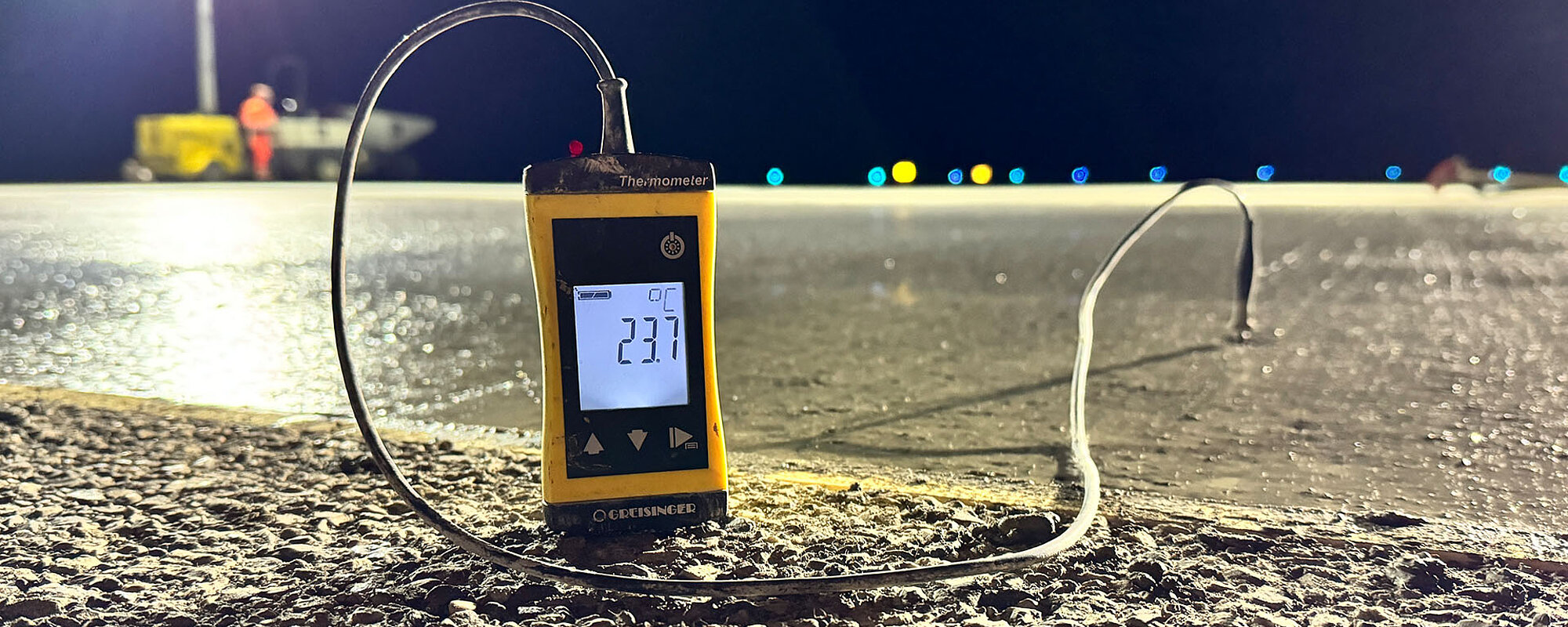Working with rapid-hardening concrete
Our experienced engineers will support you in the selection of the concrete plant, the composition of your concrete mix, all the necessary work preparations and will be at your side as dedicated project managers.
For the optimal use of our rapid-hardening concrete on areas such as airfield pavements, certain preparations and preliminary trials are necessary. In the first step, tests are conducted in our laboratory and at the selected concrete plant to determine an accurate, project-specific concrete mix. Subsequently, a test slab can be created under real conditions—ideally at a location without operational risk. If the trial is successful, the actual slab replacement in operational areas can begin. Detailed planning of every step is essential for the successful application of rapid-hardening concrete. Once the first meters of the new concrete slab are poured, compaction must start immediately—even if the concrete for the next section of the same slab has not yet arrived on-site. This parallel construction process is the main difference compared to conventional concrete construction methods.
The right rapid-hardening concrete for your construction project
Our rapid-hardening concrete is particularly suitable, but not limited to, large-scale repairs and renovations, including railway and bridge construction. For example, runways or highway sections can be completely renewed within a single construction season using a slip-form paver—always carried out during nighttime shifts. This allows for the rehabilitation of highways and airfield pavements without operational interruptions.
However, our rapid-hardening concretes can also be applied manually. This is especially advantageous in railway construction, as well as in tunnel and bridge construction, where the geometry of the repair area is complex, the concrete slabs to be replaced are not directly adjacent, or where a full surface replacement using machinery is not economical. The consistency and working time of our concretes can be perfectly adapted to meet the specific requirements of the construction site. By adjusting the concrete admixtures, the rapid-hardening concrete can be tailored to project-specific demands such as transport distances, installation times, methods, and local conditions.
This flexibility makes the manual application method the optimal solution, particularly for connection work and localized repairs on bridges and railway systems.



